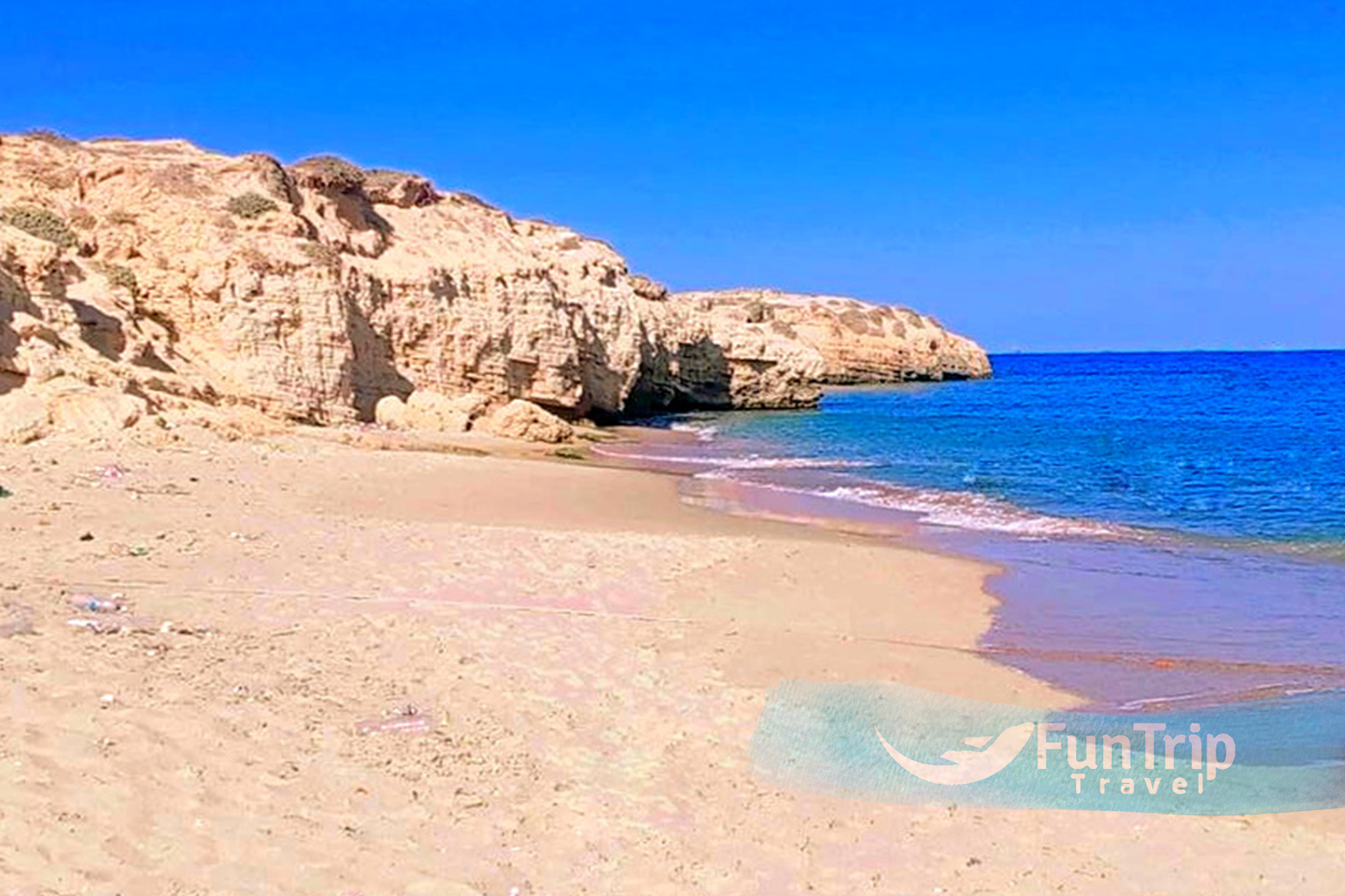In 332 BC, Alexander the Great established the city of Alexandria. The famous Greek monarch and fighter was enamoured of the sleepy fishing hamlet of Racoda on the Mediterranean Sea, which looked out at Pharos Island, after he had conquered Egypt. Alexander chose to construct a bridge between the island and the hamlet as the new centre of Egypt, rather than Memphis. Alexander had a number of priorities in mind when deciding where to establish his new city. He envisioned Alexandria as the regional epicentre of Hellenic and Greek culture.
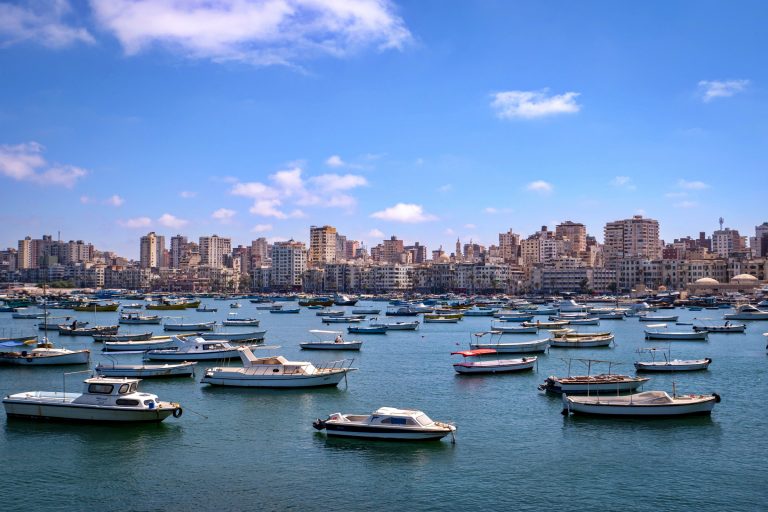
EXPLORE. CONNECT. CREATE MEMORIES
Alexandria during the Ptolemaic Period
After Alexander’s death, Egypt and Alexandria fell under the rule of the Ptolemies, who oversaw a time of great prosperity and development, especially during the administrations of Ptolemy I and Ptolemy III, which spanned the latter half of the third century and the first half of the second. The world’s biggest library, with more than 70,000 volumes and unique documents, the Library of Alexandria stood as one of the most recognisable symbols of ancient Alexandria during this period. Alexandria is the birthplace of numerous illustrious academics, scientists, and thinkers, including the famous scientist and creator of geometry, Euclid; the inventor of modern mathematics, Archimedes; and the renowned scientist and founder of medicine and anatomy, Herophilus.
Alexandria during the Roman and Coptic periods When Octavian defeated Antonio and Cleopatra in the famous battle of Actium, Alexandria, like the rest of Egypt’s cities, fell under Roman control and remained the Nile’s capital as well as one of the most important cultural and commercial centres. When Saint Marcus brought the Christian religion to Alexandria and began preaching to the people in the middle of the first century AD, Alexandria’s importance increased once more, and it became one of the most important Christian intellectual centres in the Mediterranean Sea. It served as a meeting place for scholars from Morocco, Andalusia, and the Eastern Mediterranean to share their experiences and ideas. Alexandria during the Islamic era When Islam spread in Egypt, and despite the fact that Alexandria was no longer the country’s capital after the establishment of El Fustat in the 7th century, the city thrived as a major trading port, economic and cultural centre. This is in addition to the construction of numerous Islamic structures such as Mosques, palaces, hotels, and Islamic schools of learning, all of which played an important role in the spread of Islam throughout the region. Alexandria experienced its first and only recession while under Ottoman rule. When France invaded Egypt in the 18th century, Alexandria was the first city in the Middle East to receive hordes of western invaders. When Mohamed Ali became Egypt’s independent ruler, Alexandria reclaimed its significant position, particularly with the diverse mix of people who lived in the city throughout its long and rich history, to become an open-air museum of architecture and culture. From the late nineteenth century until the 1950s, Alexandria was a bohemian tourist attraction, with a glittering cast of writers, poets, and artists who made the city their home. Although there are few actual historic monuments and things to do in Alexandria today, unlike Cairo and Luxor, it is one of the best places to visit in Egypt to capture a sense of days-gone-by grandeur.
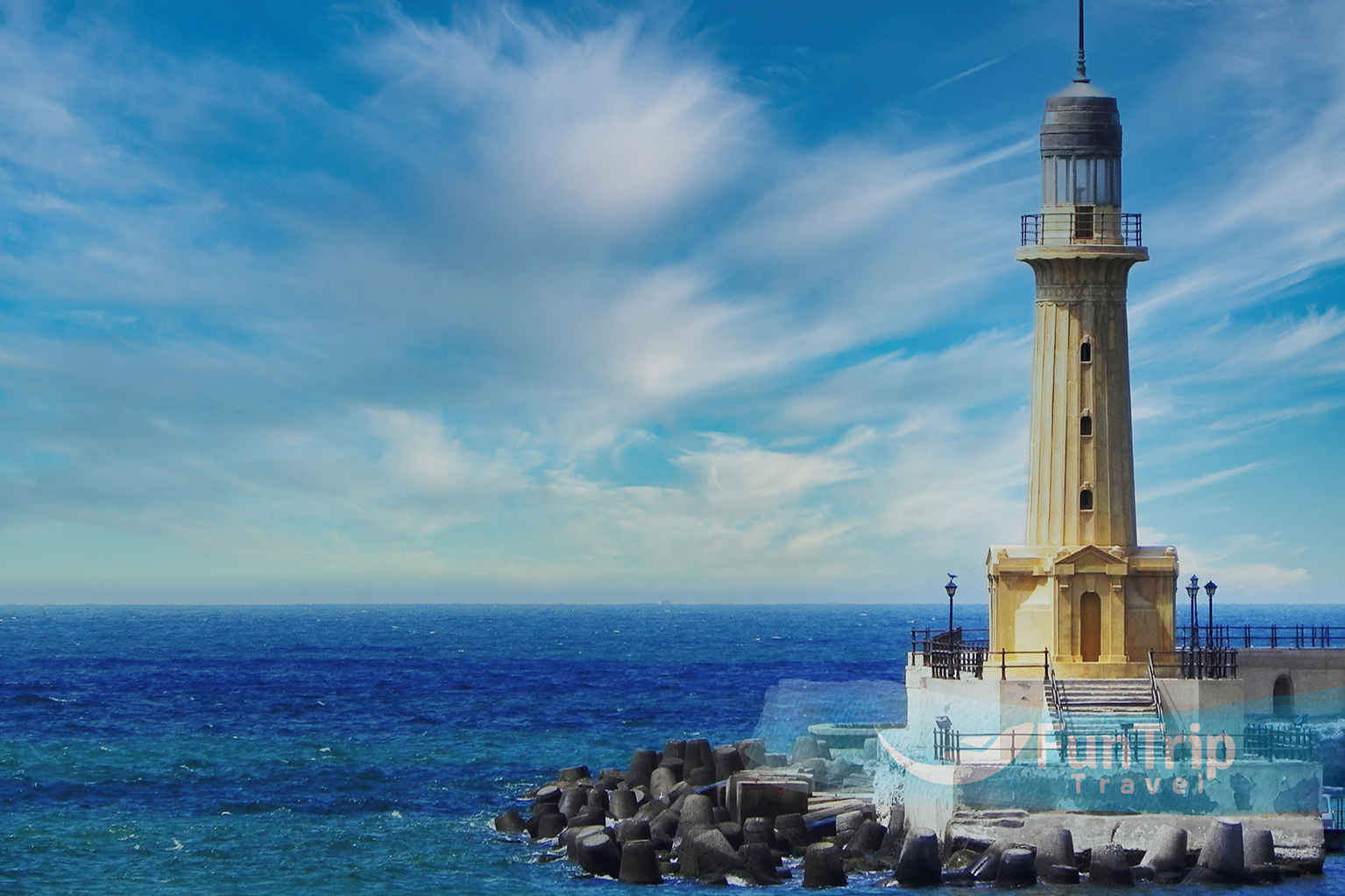
The Bibliotheca Alexandrina
Most visitors to Alexandria head straight for this modern reimagining of the ancient Great Library. The Bibliotheca Alexandrina is one of Egypt’s most significant contemporary landmarks and the city’s cultural heart. It houses one of the most ambitious libraries in the modern world, as well as a slew of museums devoted to Alexandria’s history and heritage. Its design is centred on a massive sun disc that presides over the waterfront Corniche. The massive main library and its reading room can hold up to eight million volumes. The main tourist attractions for visitors, however, are the beautifully curated exhibition spaces beneath the main library. The Antiquities Museum in Alexandria houses a collection ranging from Ancient Egypt to the Greco-Roman era, with the highlight exhibits displaying statuary discovered during underwater archaeological excavations in the harbour. The Manuscript Museum, located beneath the library, houses a collection of ancient texts and scrolls. There are also rotating contemporary art exhibitions, a permanent Egyptian folk-art collection, and a Science Museum and Planetarium geared specifically toward children.
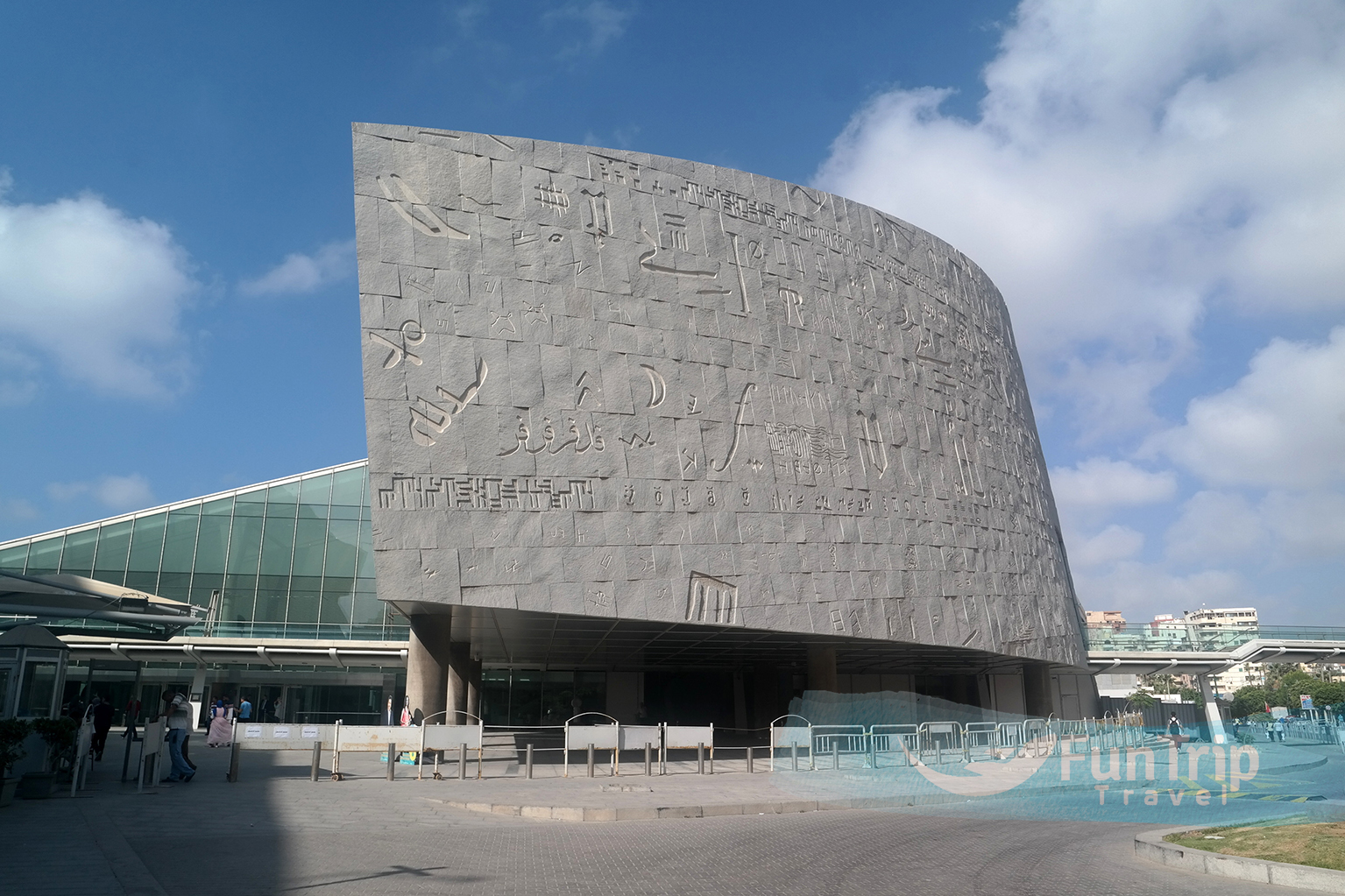
Alexandria Corniche
Downtown The wide, waterfront Corniche Road in Alexandria is as much a symbol of the city as any of its monuments. Strolling the Corniche, particularly the section between Saad Zaghloul’s main shorefront square and Fort Qaitbey on the Eastern Harbor’s western tip, gives you a real sense of the cosmopolitan elegance and decadence that defined this city in the late 19th and early 20th centuries. Much of the architecture from this era still stands along the Corniche, though much of it is heavily dilapidated and in disrepair these days. The most famous landmarks along this stretch during your stroll include the multi-domed Al-Mursi Abu Abbas Mosque and the still-standing heritage hotels, the Steigenberger Cecil Hotel and the Paradise Inn Windsor Palace Hotel.
These were once the city’s most opulent addresses, and both appear in Lawrence Durrell’s classic Alexandria Quartet novels set in the city. The Cecil was also famous for hosting Agatha Christie, the British Secret Service, and Winston Churchill during WWII, as well as Egypt’s beloved singer Umm Kalthoum.
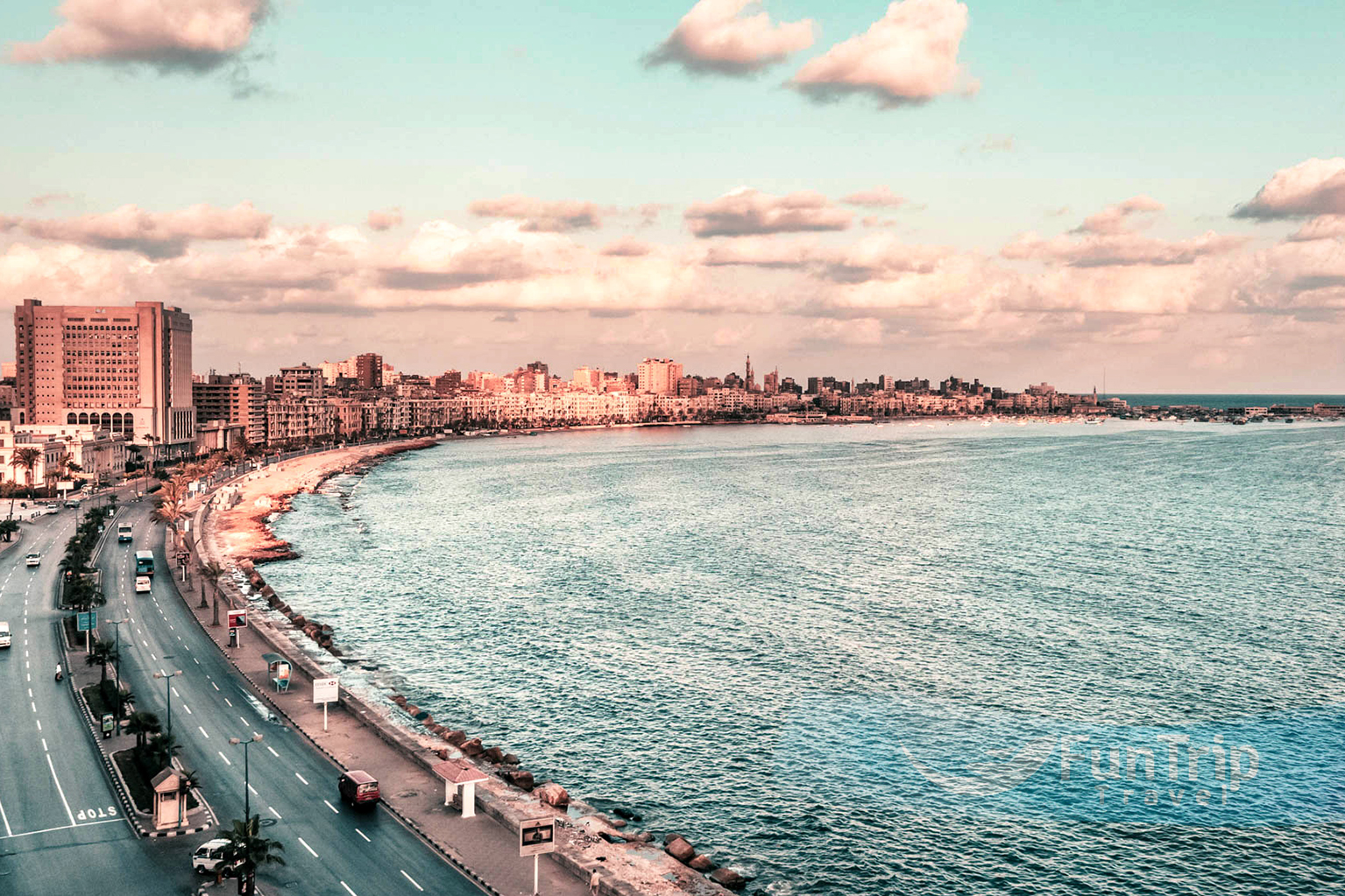
The Kom el-Shuqqafa Catacombs
are hewn out of the side of a cliff in the Carmous neighborhood’s south. Some researchers have placed their creation in the second century CE, making them a prime illustration of the unique blend of Egyptian and Greco-Roman forms so characteristic of Alexandrian art. They were found in 1900 after a mule accidentally fell into one of the tombs, and they feature multiple stories of sarcophagi and loculi (shelf tomb) rooms. A winding stairway leads underground to the central dome. The primary grave room and Sepulchral Church are both accessible from this door, and each has 91 loculi, or crypts, that can house three or four corpses. To the left is a huge chamber known as the Triclinium Funebre, which was likely used for funeral feasts.
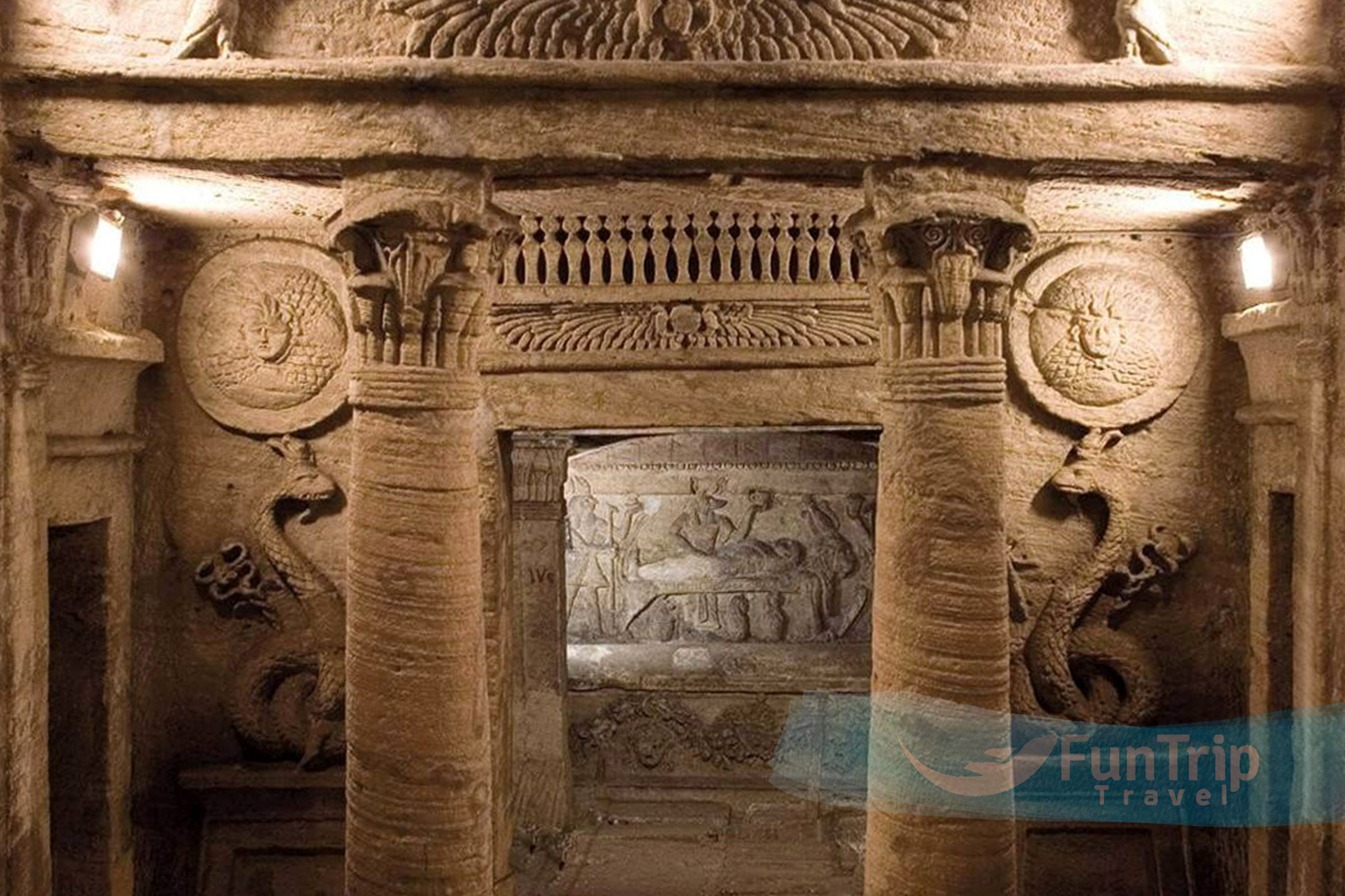
Citadel of Qaitbey
Walk west along the Eastern Harbor’s long shorefront Corniche road until you reach Fort Qaitbey. It may be a poor substitute for the mighty Pharos Lighthouse—one of the seven wonders of the ancient world that was destroyed by a violent earthquake in 1303–but this squat fort has been guarding Alexandria since 1480. Mamluke Sultan Qaitbey built Fort Qaitbey to protect this important Egyptian port from attack, and rubble from the toppled lighthouse was used in its construction. Inside, you can explore the stone-walled chambers and climb to the roof for a view of the Mediterranean.
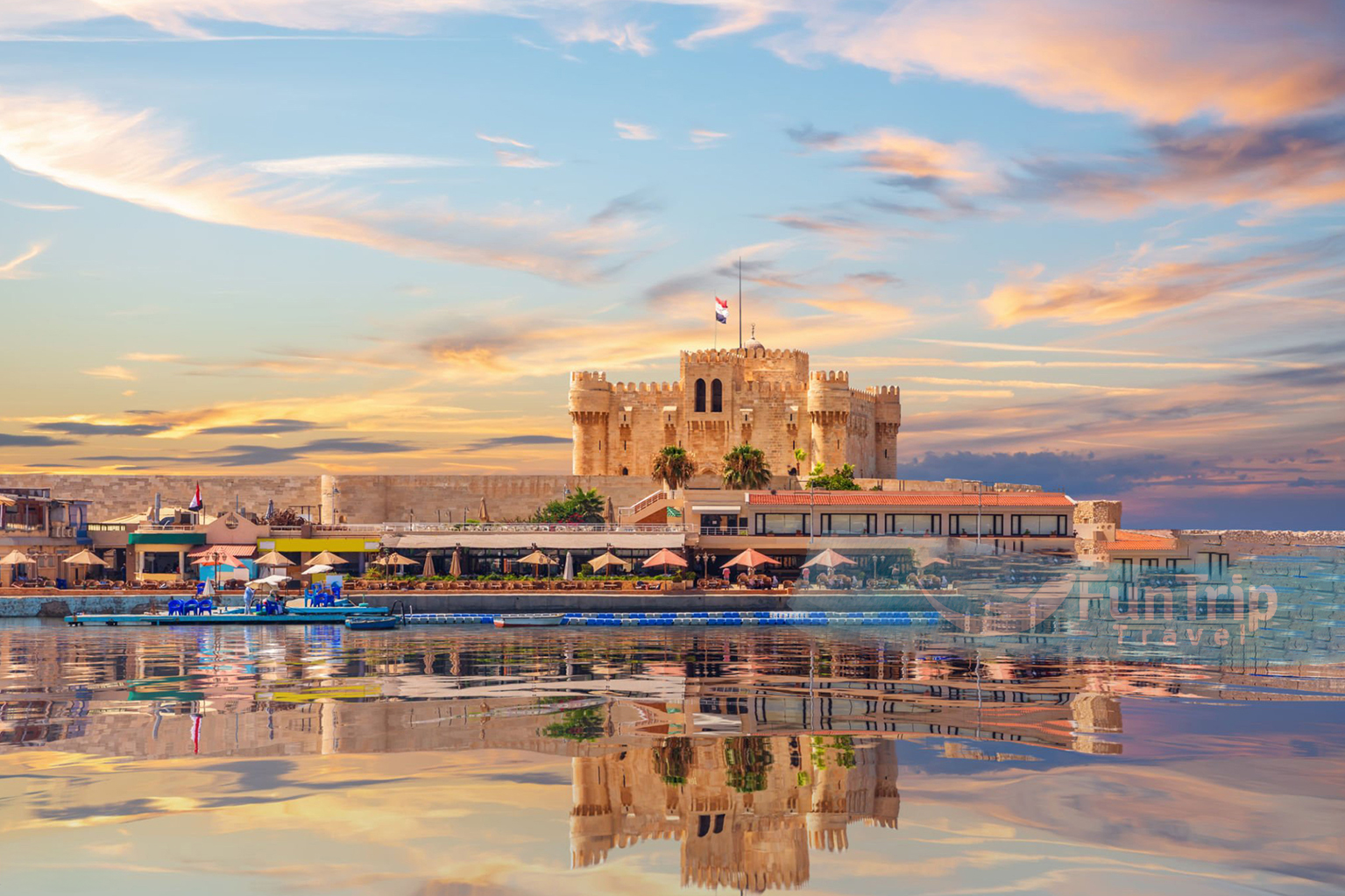
Dikka el-Kom
Nobody gave much thought to the ancient rubble mound in central Alexandria until it was decided to clear the site for new housing in the 1960s. As construction began, the Kom el-Dikka (“Mound of Rubbles”) area revealed a slew of ancient ruins buried beneath, including a small Roman theatre. Today, the area is a small archaeological park with Greco-Roman ruins from Alexandria.
In addition to the theatre, there are ruins of a Ptolemaic temple, a Roman bathhouse, and several Roman villas. Excavation work on the Villa of the Birds in this town uncovered well-preserved 3rd-century mosaic floors, which have been preserved.
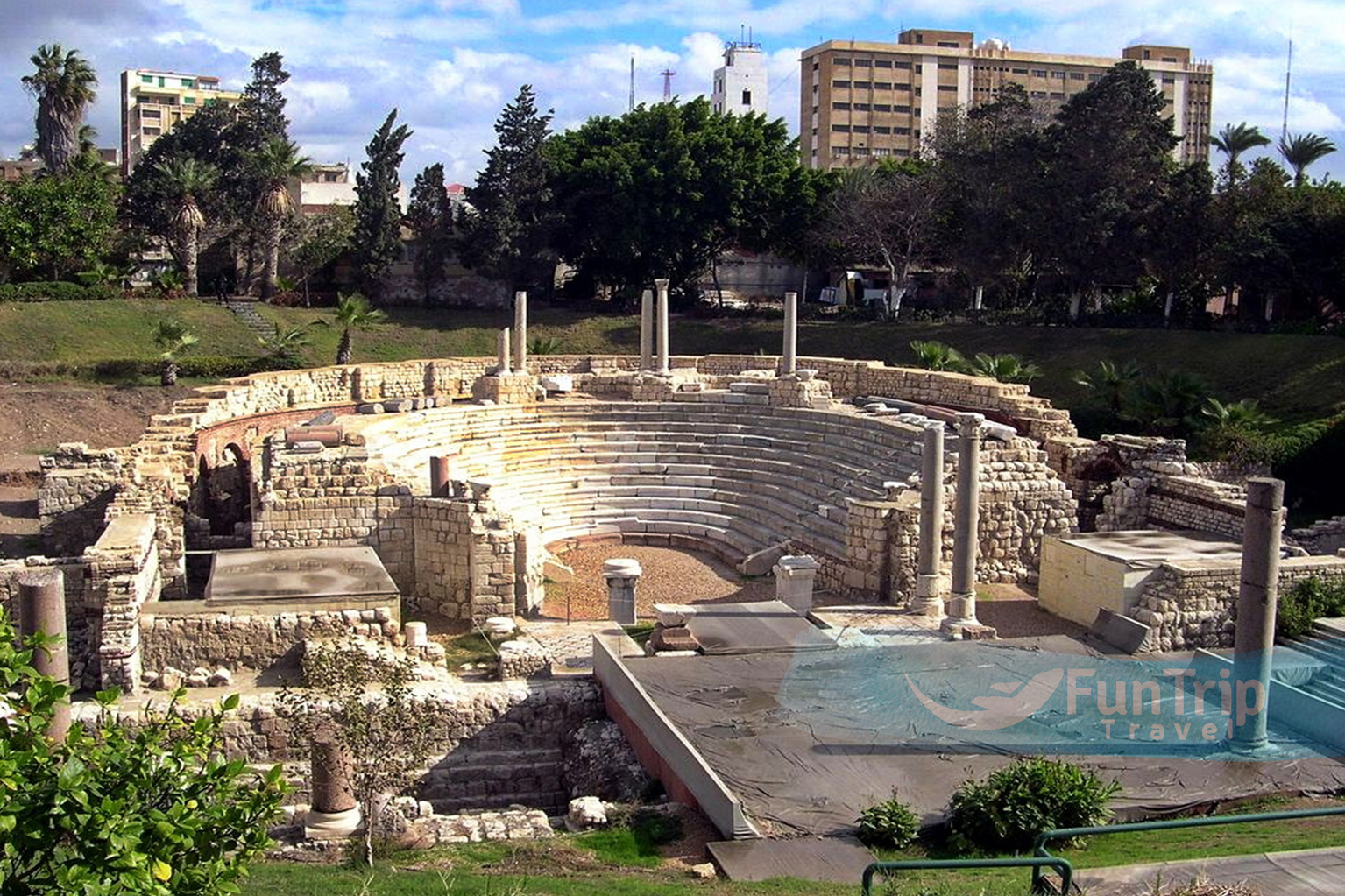
The Pompey’s Pillar
In Carmous, near the Catacombs of Kom el-Shuqqafa, stands Alexandria’s only fully intact ancient monument, which is littered with the remains of ancient walls, architectural fragments, and rubble. Pompey’s Pillar rises from the ruins of the ancient and famous Serapeion (Temple of Serapis), which was once used to store the Great Library of Alexandria’s overflow of manuscripts.
This column of red Aswan granite with a Corinthian capital, rising to nearly 27 metres in height, has nothing to do with Pompey and was instead erected in 292 CE in honor of Diocletian, who supplied food for the city’s starving population following the siege. The badly ruined Serapeion can be seen beneath, but you can clamber down some staircases into a substructure of chambers.
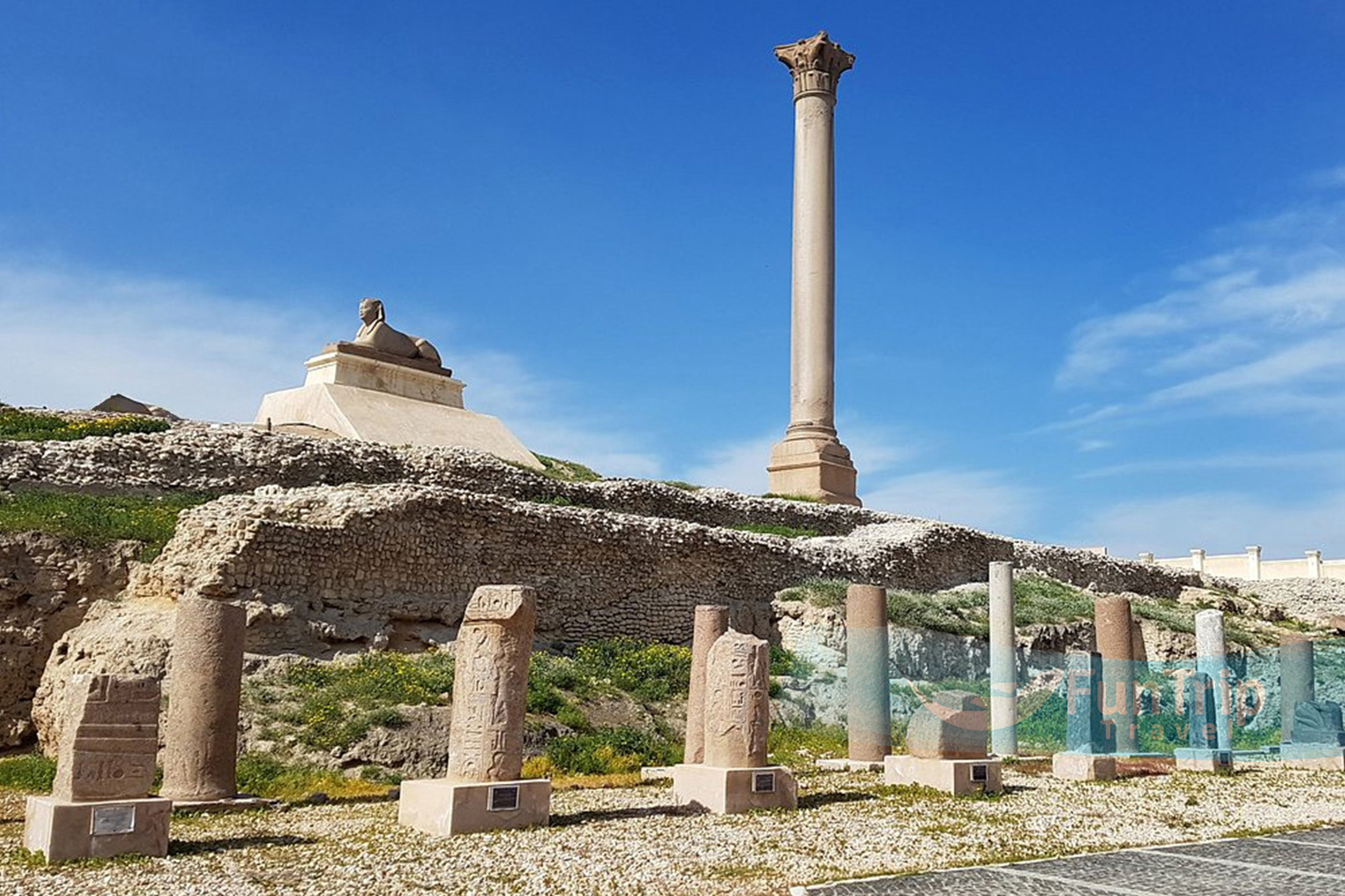
Dive the Underwater Ruins of Alexandria
Dives in Alexandria aren’t about vibrant coral reefs and marine life. Instead, Eastern Harbor dive sites are all about ancient underwater ruins. For divers, Alexandria offers a once-in-a-lifetime opportunity to dive among the ancient city’s toppled statues and columns. When diving in Alexandria, keep in mind that the underwater visibility is poor. In recent years, the waters off the coast of here have provided plenty of riches for underwater archaeologists. Archaeologists discovered the port city of Heracleion-Thonis in the bay of Aboukir to the northeast of the city and have brought many of the treasures to the surface, which are now on display in Alexandria’s museums. For the time being, however, the majority of recreational diving opportunities remain concentrated in the Eastern Harbor. The most popular Eastern Harbor attraction has been dubbed “Cleopatra’s Palace” and was once a palace area – though we’ll never know if the great lady herself ever lived there. There are still sphinxes, tumbled columns, and statuary galore here, making for a fascinating underwater experience. The National Museum of Alexandria is a must-see for anyone interested in learning about the city’s rich history. The collection takes you from the Pharaonic era (in the basement) to the Hellenistic era, when Alexandria and Egypt were ruled by the Ptolemy dynasty founded by Alexander the Great (on the ground floor), and all the way up to the Byzantine and Islamic periods (on the 1st floor). The museum’s main attraction is the ground floor’s exhibits of statuary and artefacts from the underwater archaeological explorations of the sunken port city of Heracleion-Thonis in Aboukir Bay. The museum does an excellent job of bringing ancient Alexandria to life, with excellent map drawing exhibits that imagine what the classical city would have looked like, assisting visitors in understanding the city’s changing face.
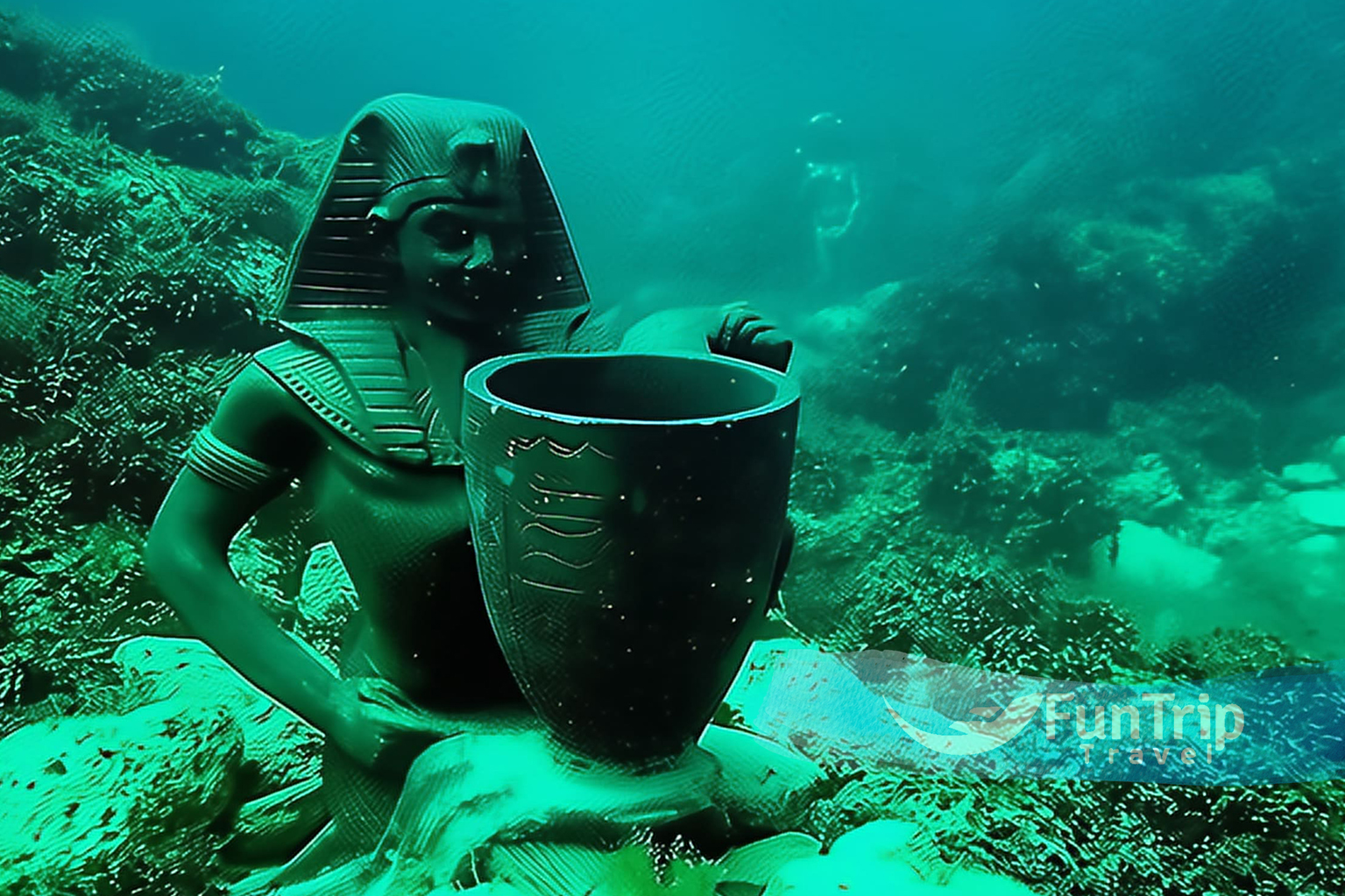
Montazah Gardens
Montazah, a lush haven of tall palm trees, trimmed lawns, and blossoming flowers on the city’s eastern outskirts, was once off-limits to all but the royal court and their hangers-on. Built in the 1890s as a hunting lodge by Khedive Abbas Hilmi, it was later significantly expanded by King Fuad and replaced Ras el-Tin Palace as the royal family’s summer residence.
The Montazah Palace, with its ornate Florentine-inspired towers and Rococo flourishes, is not open to the public, but everyone is welcome to stroll through the sprawling gardens, which can be a welcome slice of nature after a day spent in Alexandria’s hustle. A small beach with an oddly whimsical bridge to a small island is located at the park’s southern end. If you need some peace and quiet before returning to the hustle and bustle of the city, a trip to Montazah is just what you need.
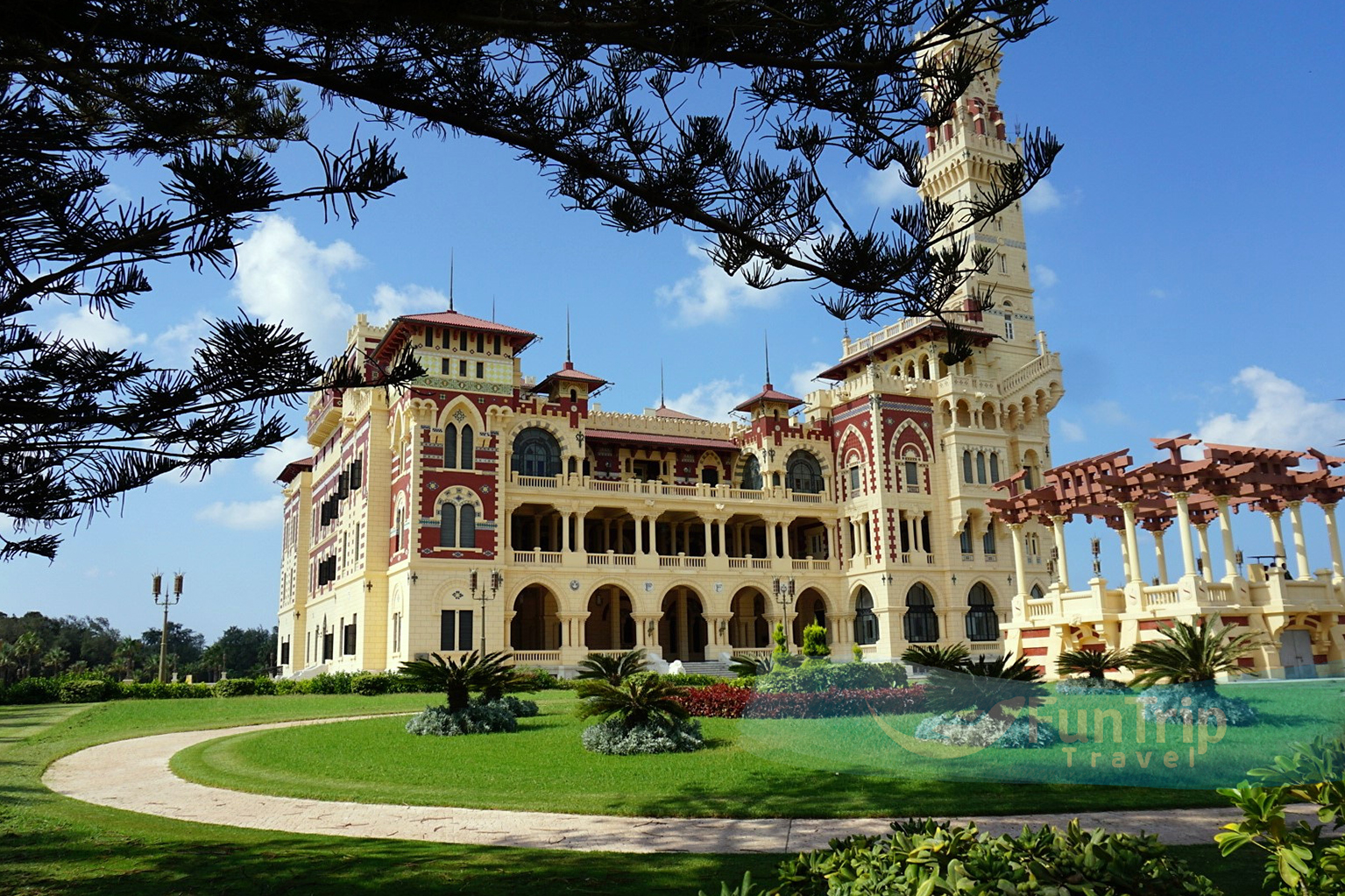
Dine Out in Alexandria’s Fish Restaurants
Many tourists come to Alexandria specifically to eat the city’s fresh seafood. The harborfront, where you can enjoy sea views with your meal, and the working-class district of Anfushi, which stretches west from Fort Qaitbey and the harbour in a maze of lanes, are the two best areas for restaurants serving fresh fish. Anfushi is the city’s liveliest area just after sunset, with traditional coffeehouses spilling out onto the street and the scent of sheesha (water-pipes) and grilled fish in the air. It’s worth going beyond the restaurant scene in Anfushi. The city’s shipyards are located on Qasr Ras el-Tin Street, while the bustling Alexandria fish market is located further down the street and is prime territory for photographers in the mornings when the haggling is at its peak.
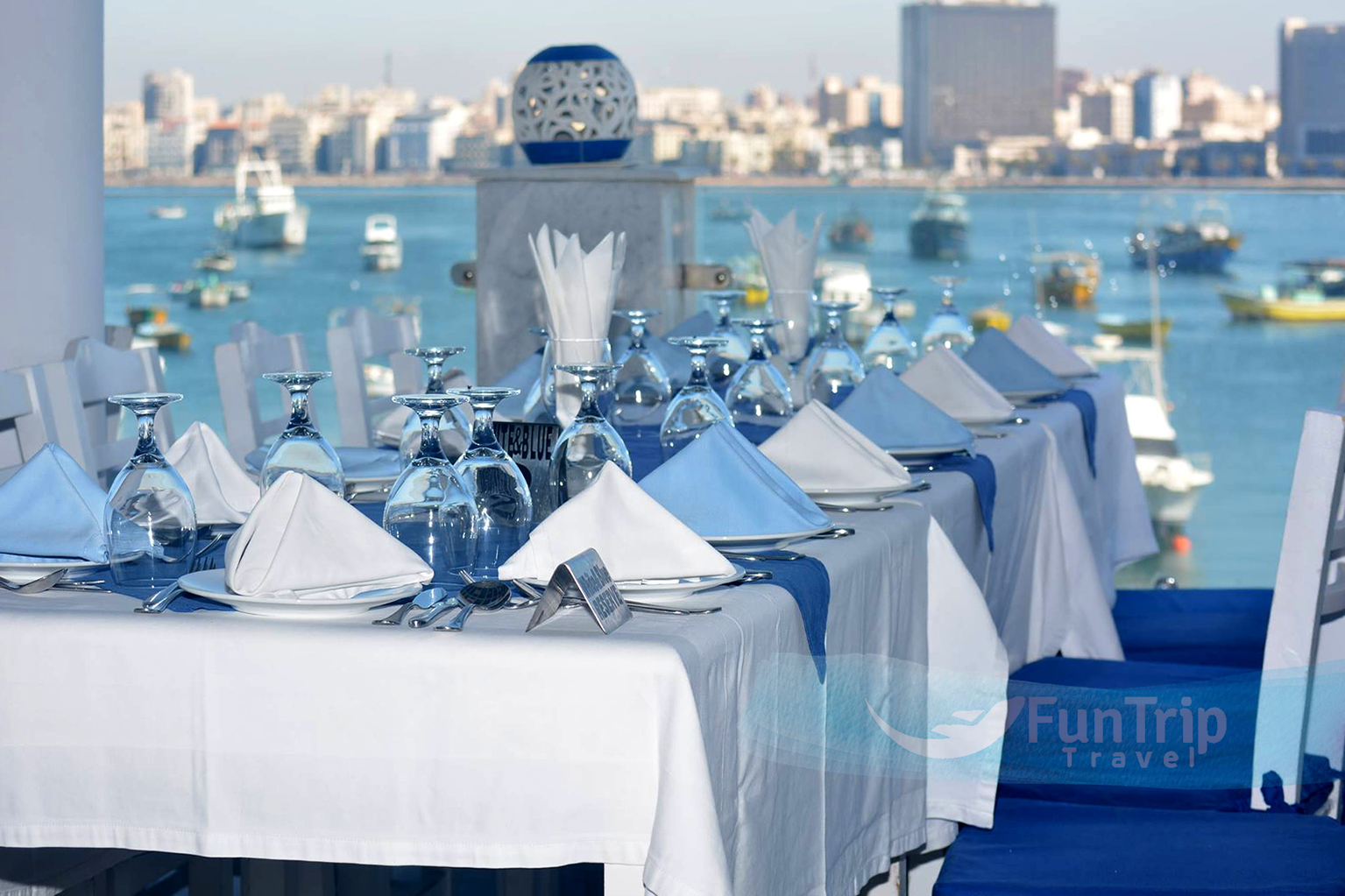
Ras el-Tin Palace
Sumptuous Ras el-Tin Palace was once a summer retreat for Egypt’s sultans when the desert heat of Cairo became unbearable. It’s also where Egypt’s last king, King Farouk, officially abdicated in 1952 before sailing out of Alexandria’s harbour and into exile in Italy. The palace is now used by the Egyptian navy, so its magnificent interiors are off-limits to casual visitors, but the monumental white façade, best viewed from the harbour waters, is a must-see. Look for in Alex’s Main Market The main market (market) in Alexandria runs through the back streets, west from Midan Tahrir in the city centre.By poking around in this district, you’ll find everything from fresh produce to silver trinkets. To be fair, there isn’t much for tourists to buy; this is a genuine local market, and it’s a place to visit more to experience Alexandrian life than to shop. The entire market area is a jumble of lanes that branch off from one another, each specializing in a different product. Don’t miss a stroll through here if you want to delve a little deeper into Alexandria’s soul.
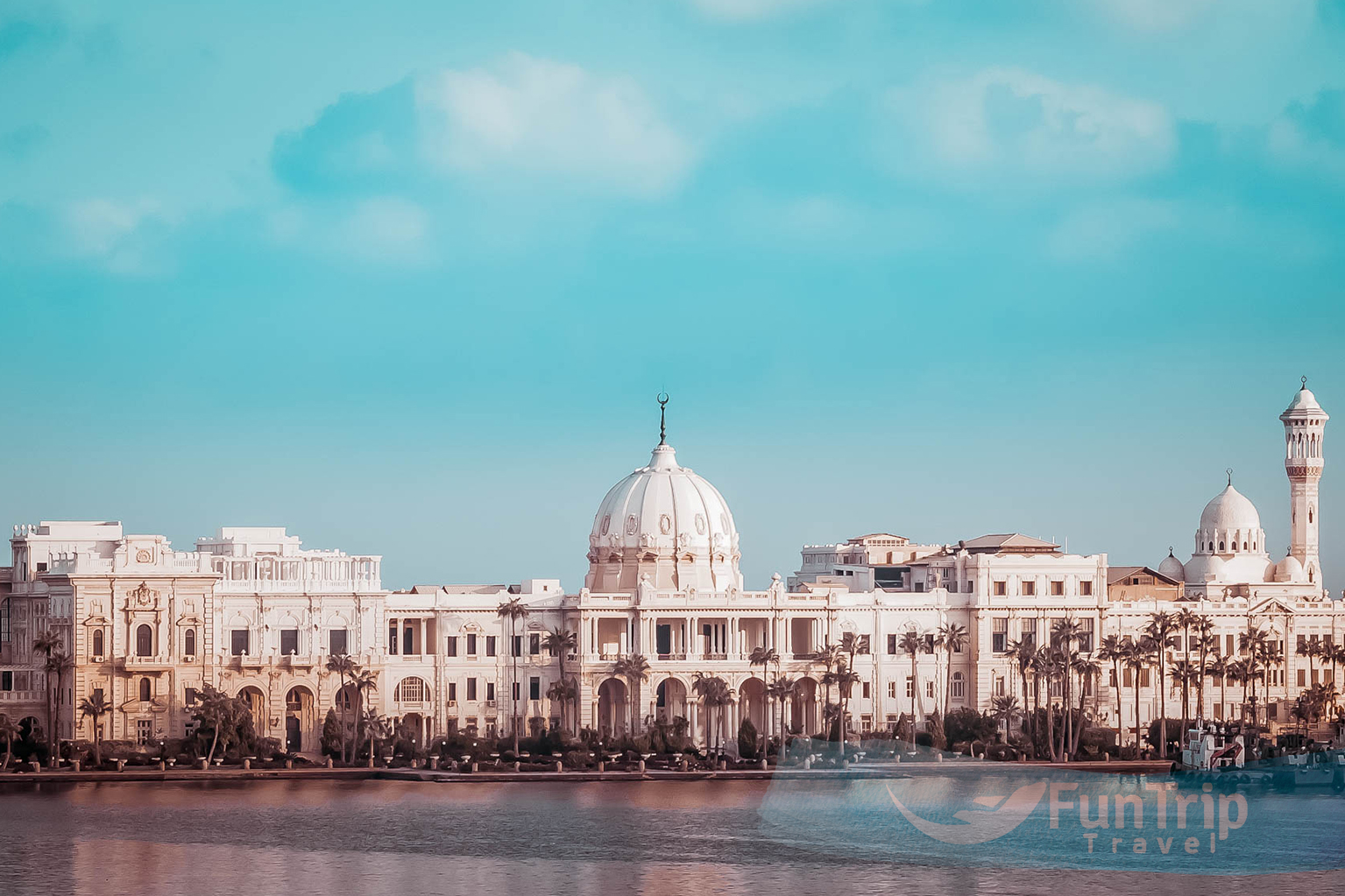
Al-Mursi Abu Abbas Mosque
The Abu Abbas al-Mursi Mosque, a major landmark in Alexandria, was built in 1796 over the tomb of the 13th-century Sufi holy man Abu Abbas al-Mursi. Abu Abbas, who was born in Murcia
(in Spain’s Andalusia region), rose to prominence as a religious leader in Alexandria, and his teachings are still revered in Egypt. The massive cream-colored mosque that bears his name is a popular pilgrimage destination. The mosque’s exquisite facade of swirling Islamic calligraphy designs and motifs is the main draw for non-religious visitors. Visitors who wish to view the intricate mosaic halls should dress modestly and leave their shoes at the main entrance.
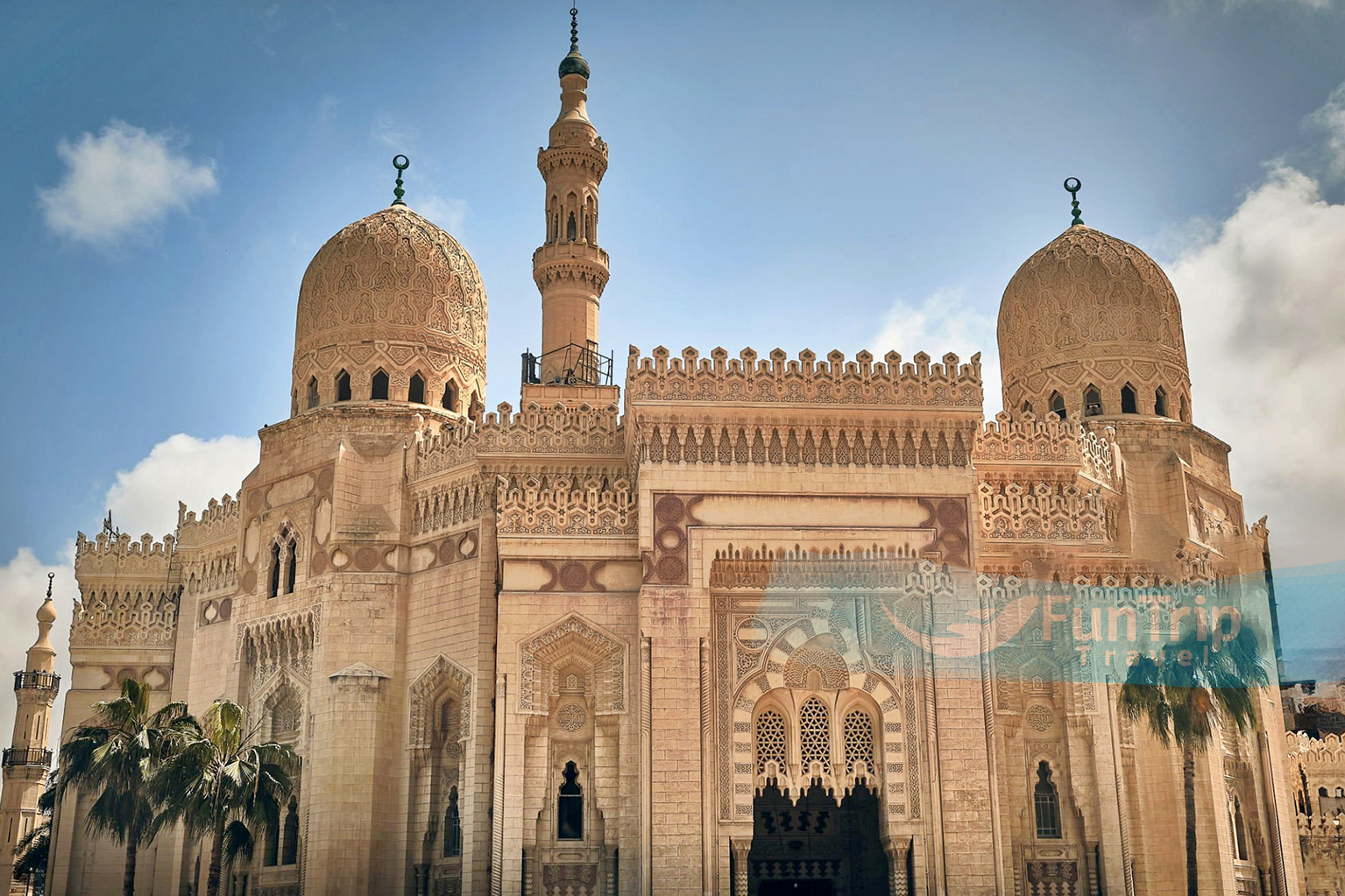
Royal Jewelry Museum
This museum, located just north of Stanley Bridge, is easily accessible from downtown Alexandria. It is set in the palace of Fatma Al-Zahraa Haider, a descendant of Muhammad Ali Pasha, Egypt’s first viceroy (pasha) under Ottoman rule who went on to establish Egypt’s royal family dynasty that ruled until independence in 1952. The palace itself, built in 1923, is an excellent example of the fusion of Islamic and European architectural styles. The ornate plasterwork ceilings of some rooms, which are gilded and frescoed, are reason enough to visit, but the interiors also house a collection of jewellery, household items, and artwork once owned by various members of the Muhammad Ali Pasha dynasty.
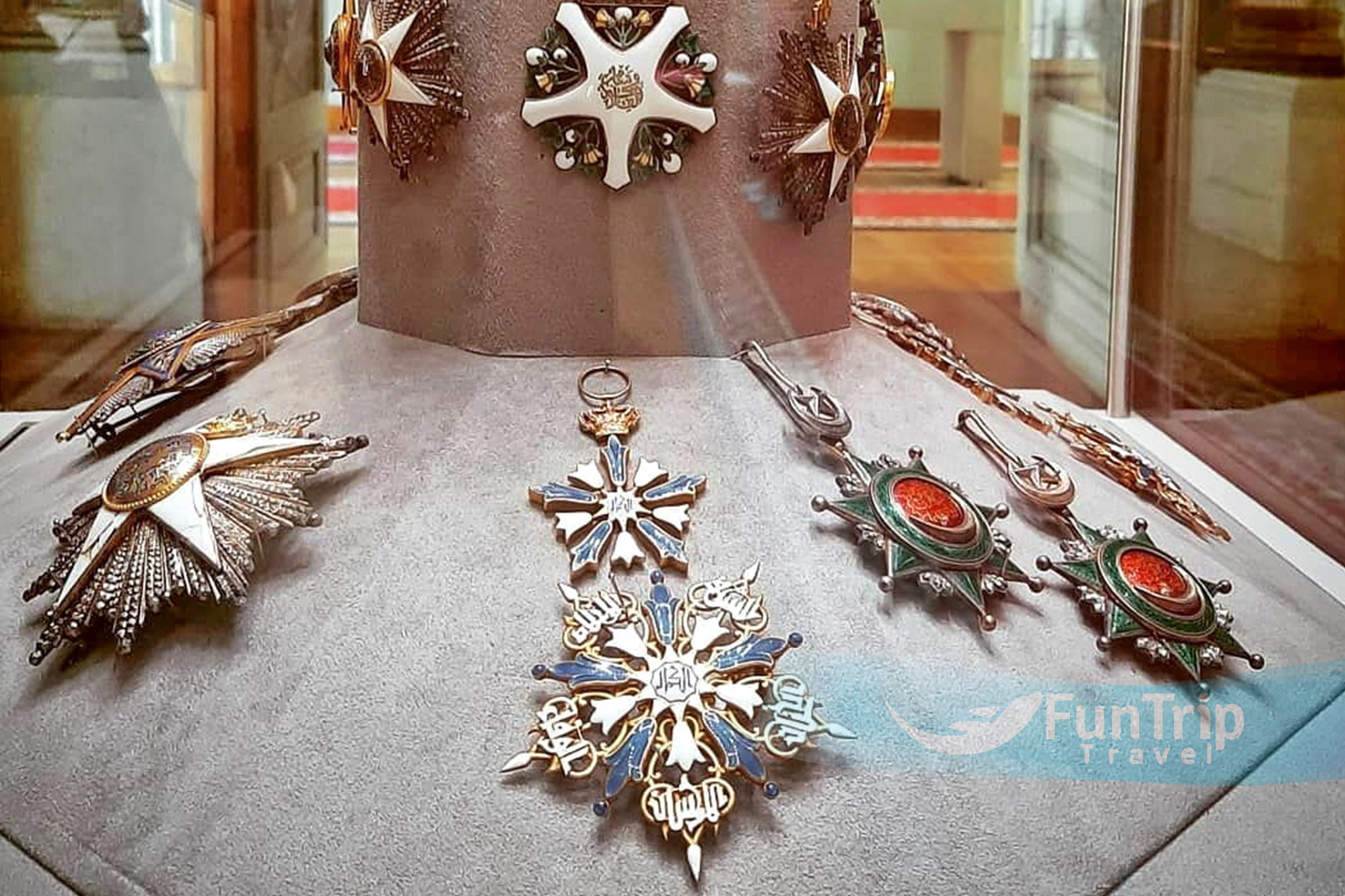
Mahmoud Said Museum
Anyone interested in Egypt’s art scene should make a beeline for this Italianate villa, which was once home to Egyptian artist Mahmoud Said and is now an art gallery devoted to his work. Many consider Mahmoud Said to be the founder of Egyptian modern art. His work is European in style but has a distinct Egyptian identity. The collection of his work displayed in these rooms spans his entire painting career and includes everything from landscapes to nudes. Because the museum is only a one-kilometer walk north of the Royal Jewelry Museum, the two can be easily combined.

Abou-kier
The little fishing village of Aboukir, about 24 km northeast of Alexandria, presides over a promontory defended on all sides by old forts and has an illustrious history that belies its small size. This is where the Battle of the Nile took place on August 1st, 1798, in which Nelson annihilated the French fleet. Napoleon defeated a numerically superior Turkish force here in 1799, and Sir Ralph Abercromby defeated the remnants of the French army and forced them to flee Egypt in 1801. For naval history buffs, the military history of battles alone is reason enough to visit, but for the average tourist, the main reason for a trip here is to sample some of Egypt’s finest seafood. In the summer, locals flock to Aboukir Bay’s plethora of fantastic fish restaurants. Stuffing yourself with seafood as the sun sets over the Mediterranean is the ideal way to end an Alexandrian day.
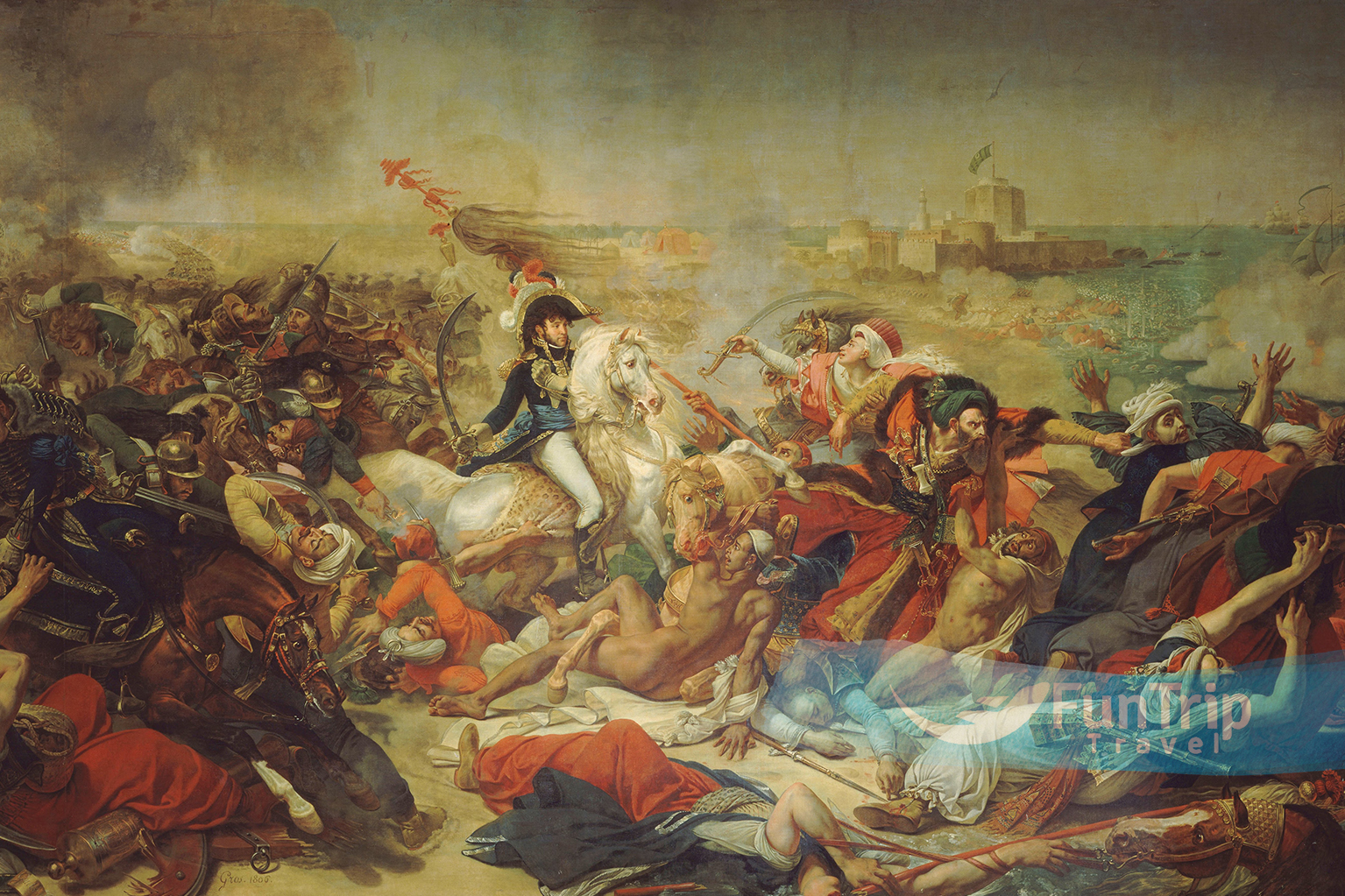
The Cavafy Museum
Constantine Cavafy (1863-1933), one of Alexandria’s most famous sons, was a Greek Alexandrian poet who gained fame and recognition for his writing after his death.
His apartment, on what is now Sharm el-Sheikh Street, is a memorial to his life and a must-see for anyone on an Alexandria literary pilgrimage. Cavafy spent his working life as a journalist and civil servant, and his poetry was only known to a small group of Alexandrian writers (including English novelist E.M. Forster, who championed Cavafy’s work). His poetry, on the other hand, richly captures Alexandria’s vast history—particularly its Hellenistic origins—and he has become one of the city’s most celebrated literary figures. Many of his manuscripts and correspondence can be found in the small museum.
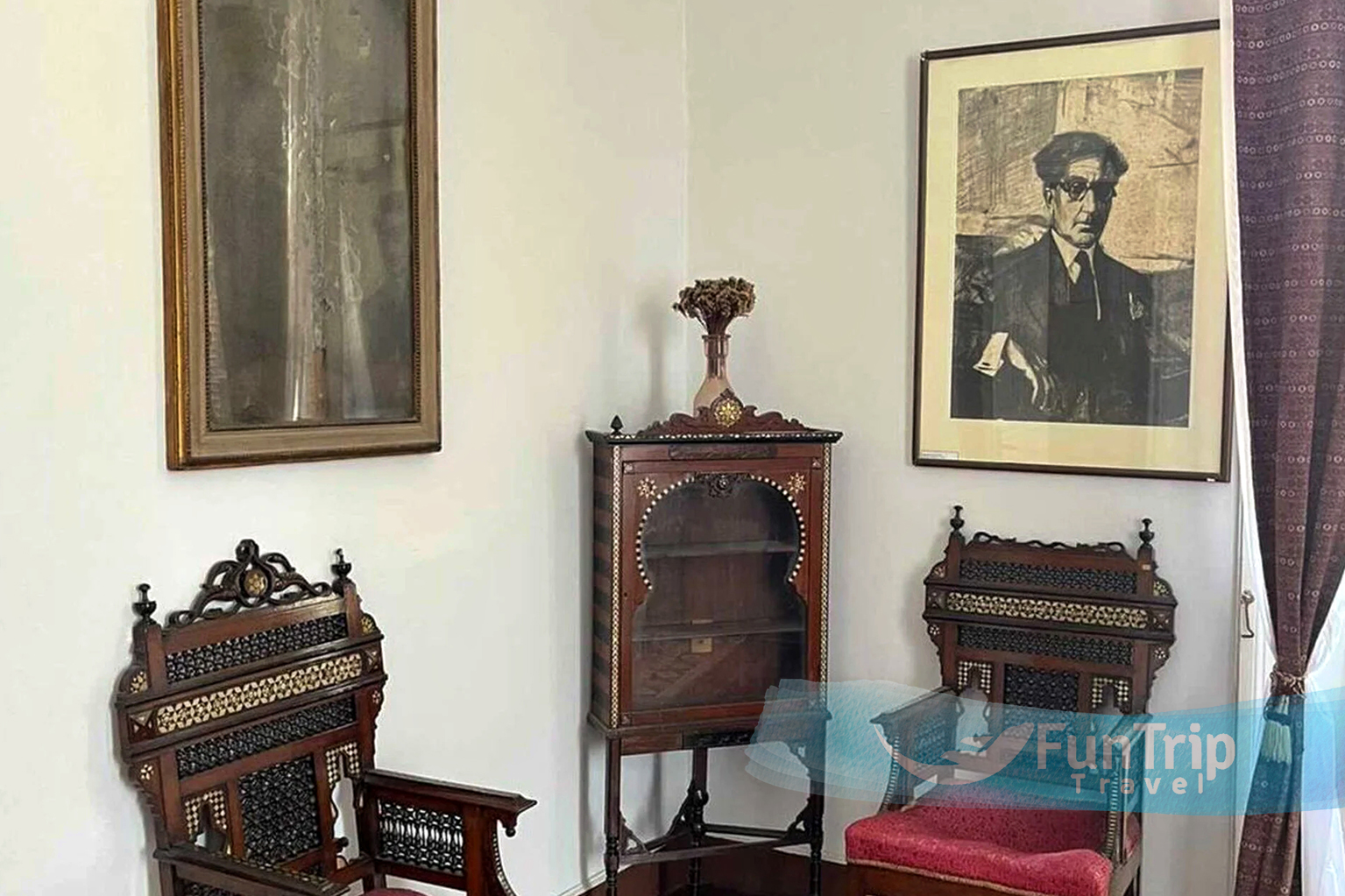
Nelson’s Island
which is 20 km to the east of the Egyptian harbor city of Alexandria, It is known for its strategic location and its proximity to the Nile River, making it a cultural and economic hub. The length of Nelson’s Island, Alexandria, is only about 350 meters, and its maximum width is around 125 metres. The island was considerably bigger in antiquity due to the heavily quarried and eroded yellow granite, which was part of their mission.
